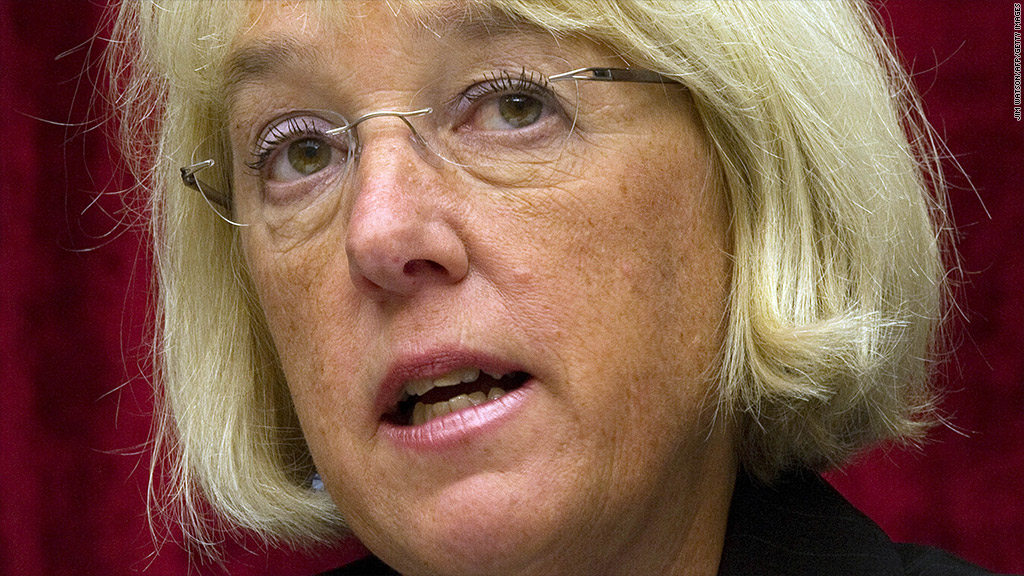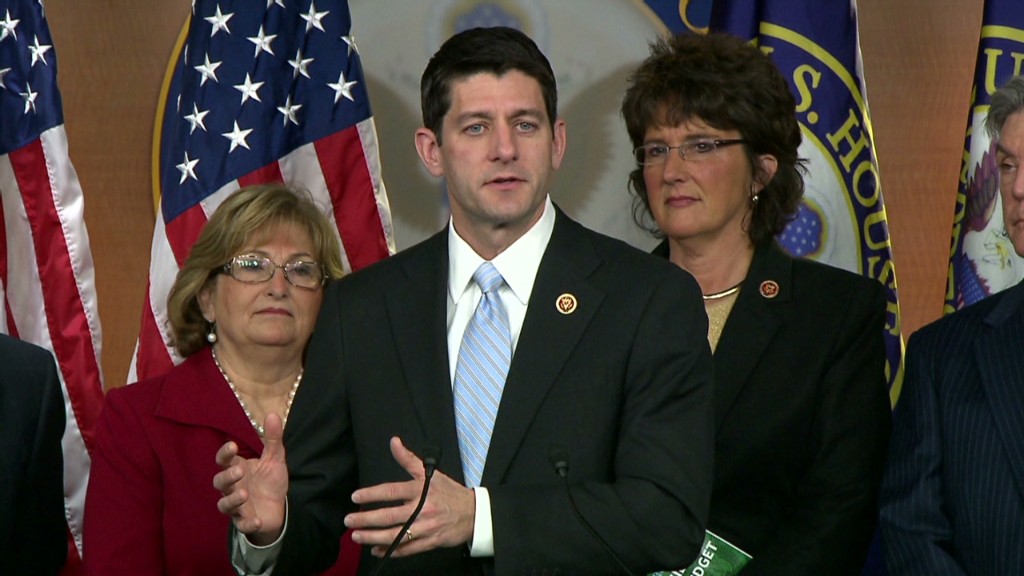
The talk in Washington on Tuesday was all about "no new taxes, ax spending, kill deficits and watch the economy grow."
On Wednesday, it was all about "raise more tax revenue, selectively curb spending, reduce deficits and watch the economy grow."
The chasm between Republicans and Democrats on the federal budget and the country's debt was on full display this week.
Senate Budget Chairman Patty Murray on Wednesday released the Democrats' vision for the 2014 budget. It is more of a treatise of guiding principles, and as such, it was light on details, even more so than the budget proposal put forth Tuesday by Republican House Budget Chairman Paul Ryan.
Deficits: Murray estimates the Democrats' budget overall would reduce deficits by a total of $1.85 trillion over 10 years.
A little more than half of that -- $960 billion -- is intended to replace the automatic budget cuts that went into effect on March 1.
The Democrats' deficit reduction would be evenly split between spending cuts and tax increases.
By 2023, the Murray budget would reduce the annual deficit to 2.2% of GDP, well below the 7% booked in 2012 and the 5.3% expected this year. It would leave accrued debt held by the public at 70.4%, down from the 77% projected by CBO.
Spending: Murray's budget would reduce projected spending by an estimated $975 billion -- $493 billion in domestic spending; $240 billion in defense spending; and $242 billion in interest savings, relative to policy assumptions made by Murray. Overall, the Murray budget would grow spending by 4.7% a year.
On the domestic front, the budget proposal calls for $275 billion in mandatory health spending cuts, the vast majority of which comes from Medicare. The savings would be generated by, among other things, changing incentives for health providers and reducing waste and fraud.
The plan would also include an economic stimulus package of $100 billion for road and bridge repairs, as well as worker training. Murray said the package would be paid for by curtailing tax breaks for high-income households and corporations.
Taxes: The Murray proposal would increase revenue by $975 billion, again through eliminating and curtailing tax breaks for the wealthy and corporations.
In addition, the budget would aim to prevent filibusters on those tax increases: The Democrats' plan calls for a fast-track process that would prevent anyone from blocking votes on legislation that raises taxes on the rich and on corporations.
The plan highlights the approaches Senate Democrats would favor in raising more revenue.
One could be to impose an across-the-board limit on tax expenditures for the top 2% of earners. Or it could involve tax break restructuring, such as converting an itemized deduction to a limited tax credit, which would reduce their value to higher income households.
In terms of corporate tax breaks and loopholes, the budget plan signals that aggressive off-shore tax planning, special depreciation rules for corporate jet owners and favorable tax rates for hedge fund managers could be on the chopping block.

The plan would also seek to make permanent the temporary expansion of some tax breaks that primarily benefit low- and middle-income households, such as the Earned Income Tax Credit and the Child Tax Credit.
Contrasting visions: The Murray plan is very different from the House Republicans' proposal.
The Ryan budget would add no additional tax revenue and reduce spending by $5 trillion over a decade relative to projections from the Congressional Budget Office.
As a result, by 2023, Ryan estimates there would be no deficit at all. Murray's plan didn't offer a year-by-year breakdown of deficits, but noted that the goal is to get deficits to below 3% of GDP to stop the country's accrued debt from growing any further.
But Ryan's budget assumes one very unlikely scenario -- the repeal of major parts of health reform, from which he counts close to $2 trillion for deficit reduction.
Take that off the table, and the Murray and Ryan budgets move a little closer to each other in terms of deficits. But substantively and philosophically they're still far apart.
While Ryan's budget may pass in the House and the Murray budget may pass in the Senate, few expect that the two chambers will be able to reconcile their differences and pass a joint resolution that will officially establish the 2014 budget.
But their proposals are opening bids in broader talks for a long-term budget deal.
-- CNN's Ted Barrett contributed to this report.


